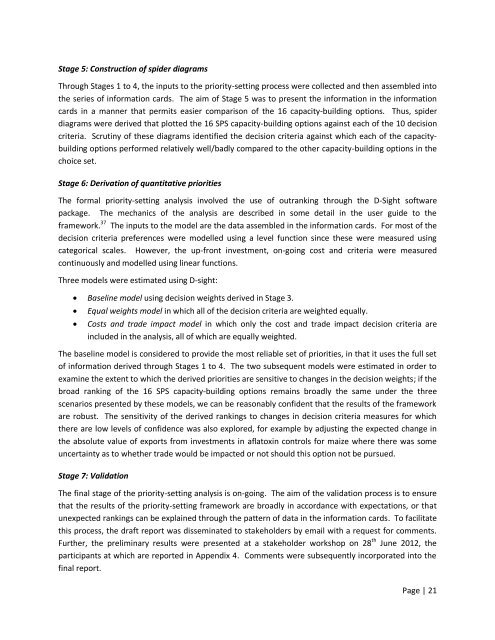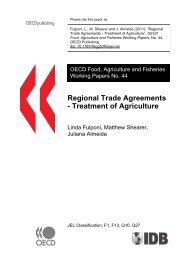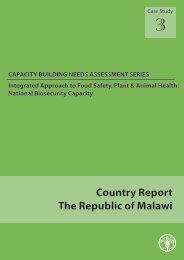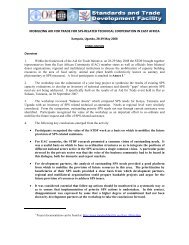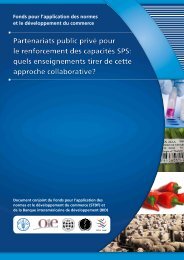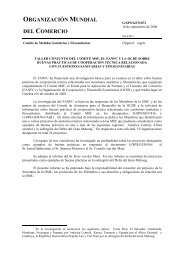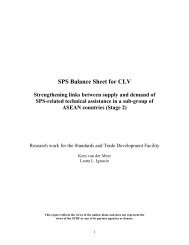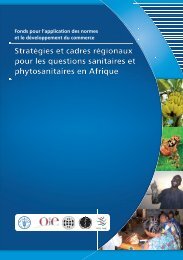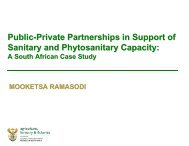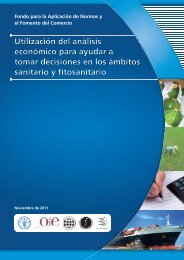MCDA Final Report Malawi - Standards and Trade Development ...
MCDA Final Report Malawi - Standards and Trade Development ...
MCDA Final Report Malawi - Standards and Trade Development ...
You also want an ePaper? Increase the reach of your titles
YUMPU automatically turns print PDFs into web optimized ePapers that Google loves.
Stage 5: Construction of spider diagrams<br />
Through Stages 1 to 4, the inputs to the priority-setting process were collected <strong>and</strong> then assembled into<br />
the series of information cards. The aim of Stage 5 was to present the information in the information<br />
cards in a manner that permits easier comparison of the 16 capacity-building options. Thus, spider<br />
diagrams were derived that plotted the 16 SPS capacity-building options against each of the 10 decision<br />
criteria. Scrutiny of these diagrams identified the decision criteria against which each of the capacitybuilding<br />
options performed relatively well/badly compared to the other capacity-building options in the<br />
choice set.<br />
Stage 6: Derivation of quantitative priorities<br />
The formal priority-setting analysis involved the use of outranking through the D-Sight software<br />
package. The mechanics of the analysis are described in some detail in the user guide to the<br />
framework. 37 The inputs to the model are the data assembled in the information cards. For most of the<br />
decision criteria preferences were modelled using a level function since these were measured using<br />
categorical scales. However, the up-front investment, on-going cost <strong>and</strong> criteria were measured<br />
continuously <strong>and</strong> modelled using linear functions.<br />
Three models were estimated using D-sight:<br />
Baseline model using decision weights derived in Stage 3.<br />
<br />
<br />
Equal weights model in which all of the decision criteria are weighted equally.<br />
Costs <strong>and</strong> trade impact model in which only the cost <strong>and</strong> trade impact decision criteria are<br />
included in the analysis, all of which are equally weighted.<br />
The baseline model is considered to provide the most reliable set of priorities, in that it uses the full set<br />
of information derived through Stages 1 to 4. The two subsequent models were estimated in order to<br />
examine the extent to which the derived priorities are sensitive to changes in the decision weights; if the<br />
broad ranking of the 16 SPS capacity-building options remains broadly the same under the three<br />
scenarios presented by these models, we can be reasonably confident that the results of the framework<br />
are robust. The sensitivity of the derived rankings to changes in decision criteria measures for which<br />
there are low levels of confidence was also explored, for example by adjusting the expected change in<br />
the absolute value of exports from investments in aflatoxin controls for maize where there was some<br />
uncertainty as to whether trade would be impacted or not should this option not be pursued.<br />
Stage 7: Validation<br />
The final stage of the priority-setting analysis is on-going. The aim of the validation process is to ensure<br />
that the results of the priority-setting framework are broadly in accordance with expectations, or that<br />
unexpected rankings can be explained through the pattern of data in the information cards. To facilitate<br />
this process, the draft report was disseminated to stakeholders by email with a request for comments.<br />
Further, the preliminary results were presented at a stakeholder workshop on 28 th June 2012, the<br />
participants at which are reported in Appendix 4. Comments were subsequently incorporated into the<br />
final report.<br />
Page | 21


